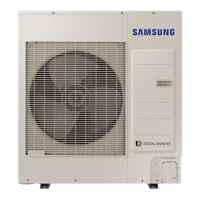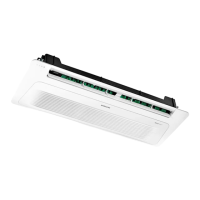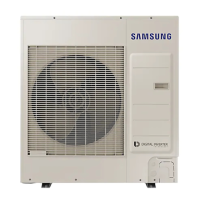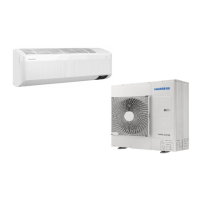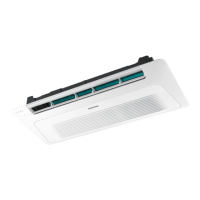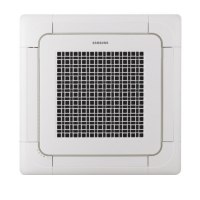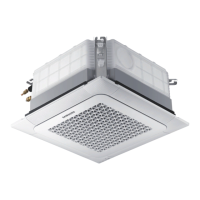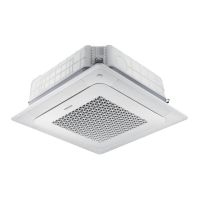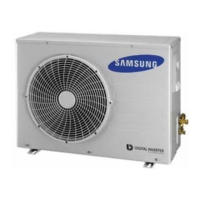What does E413 error mean on a Samsung AC TNXDKG?
- DDustin RossSep 18, 2025
If your Samsung Air Conditioner displays error E413, it indicates an outdoor sump down prevention control issue.
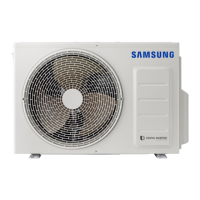
What does E413 error mean on a Samsung AC TNXDKG?
If your Samsung Air Conditioner displays error E413, it indicates an outdoor sump down prevention control issue.
What does E450 error mean on a Samsung Air Conditioner?
If your Samsung Air Conditioner shows error code E450, it indicates an abnormally high temperature on the Cond, detected for the second time.
What does E554 error mean on a Samsung AC TNXDKG?
If your Samsung Air Conditioner displays error E554, it indicates refrigerant leakage, detected for the second time.
What does E416 error mean on a Samsung AC TNXDKG Air Conditioner?
If your Samsung Air Conditioner displays error E416, it indicates an abnormally high temperature on the discharged air of the outdoor unit, detected for the second time.
What does E410 error mean on a Samsung AC TNXDKG?
If your Samsung Air Conditioner displays error E410, it indicates that the compressor is down due to low pressure sensor prevention control.
What does E665 error mean on a Samsung Air Conditioner?
If your Samsung Air Conditioner displays error E665, it indicates an external drain pump error.
What does E128 error mean on a Samsung AC TNXDKG Air Conditioner?
If your Samsung Air Conditioner displays error E128, it means Eva in sensor is detached.
What does E129 error mean on a Samsung Air Conditioner?
If your Samsung Air Conditioner displays error E129, it means Eva out sensor is detached.
What does E126 error mean on a Samsung AC TNXDKG?
If your Samsung Air Conditioner displays error E126, it indicates a discharge sensor error, specifically a short or open circuit.
What does E122 error mean on a Samsung AC TNXDKG?
If your Samsung Air Conditioner displays error E122, it indicates an error with the Eva-in sensor, specifically a short or open circuit.
| Brand | Samsung |
|---|---|
| Model | AC TNXDKG Series |
| Category | Air Conditioner |
| Language | English |
Critical safety instructions for the proper installation of the unit.
Important safety warnings and precautions during cleaning procedures.
Explanation of indicators, symbols, and information shown on the display.
Procedure for replacing batteries when the low battery indicator appears.
Proper method for storing the remote control when not in use.
How to select and change between different operating modes.
Adjusting the desired temperature for cooling, heating, or fan modes.
Selecting fan speed levels for various operating conditions.
Adjusting the direction of airflow vertically and horizontally.
Provides mild cooling without direct airflow via fine holes.
Automatic adjustment of mode for optimal comfort and efficiency.
Effective cooling mode for hot weather conditions.
Reduces humidity in the air for comfort in damp environments.
Circulates air like a fan, providing a natural breeze.
Provides warmth during colder temperatures.
Rapid temperature adjustment for quick cooling or heating.
Minimizes operating noise for a quieter environment.
Controls the audible beep feedback for button presses.
Turns the indoor unit display's illumination on or off.
Enables operation of specific indoor units or zones.
Removes internal moisture to prevent microbial growth.
Resets the filter maintenance reminder after cleaning.
Fine-tunes airflow direction for specific outlets or blades.
Sets scheduled times for the unit to turn on or off.
Optimizes sleep conditions and saves energy.
Automatic cycle to dry internal components and prevent mold.
Instructions for cleaning the exterior surfaces of the indoor unit.
Procedure for cleaning the outdoor unit's heat exchanger.
Steps for cleaning the air filter and resetting the reminder.
Method for cleaning the removable Wind-Free panel.
Routine checks and maintenance schedule for optimal performance.
Explanation of built-in protective functions against faults.
Regulatory information regarding the refrigerant used and its GWP.
